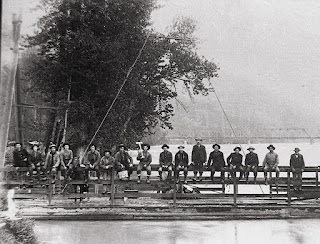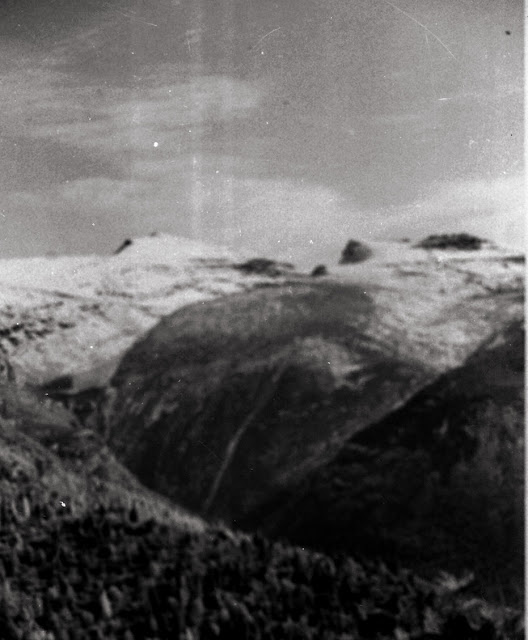Vignette Vol. 1 No. 13
Resource: BEHIND THESE MOUNTAINS
Excerpt - Noxon 1910. Forest fires held the homesteaders captive in 1910. Rain was scarce, leaving the forest tinder dry. With the government beginning to prosecute timber thieves, loggers who'd cut trees illegally found a natural opportunity. Fire left no evidence. Fires cropped up everywhere, it seemed. By early August the air was so smoke laden the sun rose an orange red globe inching across a hazy sky each day, and dropping like a blood red dish behind the mountains each night. The newly organized forest service and settlers alike fought fires throughout the scorching summer.(*USFS 1910 Commemorative.)
On the 20th of August the wind rose to gale force. For two days along a line from north of the Canadian boundary south to the Salmon River it blew, licking hundreds of little fires into big ones. Fire lines that had been held for days were scorched away under the fierce blast that turned the sky a ghastly yellow. At four o'clock it was black dark ahead of the roaring flames.
Resource: BEHIND THESE MOUNTAINS
Excerpt - Noxon 1910. Forest fires held the homesteaders captive in 1910. Rain was scarce, leaving the forest tinder dry. With the government beginning to prosecute timber thieves, loggers who'd cut trees illegally found a natural opportunity. Fire left no evidence. Fires cropped up everywhere, it seemed. By early August the air was so smoke laden the sun rose an orange red globe inching across a hazy sky each day, and dropping like a blood red dish behind the mountains each night. The newly organized forest service and settlers alike fought fires throughout the scorching summer.(*USFS 1910 Commemorative.)
 |
Photograph courtesy of Wallace
"Wally" Gamble, ca 1910
|
Clifford Weare shut down his sawmill, taking his crew of men out to fight fire on July 20th. A month later a forest service crew came to relieve them. Weare's men were exhausted, sleeping only by logs on the ground.
 |
| Trainloads of 1910 Firefighters |
On the 20th of August the wind rose to gale force. For two days along a line from north of the Canadian boundary south to the Salmon River it blew, licking hundreds of little fires into big ones. Fire lines that had been held for days were scorched away under the fierce blast that turned the sky a ghastly yellow. At four o'clock it was black dark ahead of the roaring flames.
"You could hear the roar from the fire for days. The ashes floated over Noxon just like snow."
The air felt electric, as though the whole world would go up in spontaneous combustion as the heat of the fire and the great masses of flaming gas created tumbling whirlwinds mowing down swathes of trees in advance of the flames. In forty-eight horrendous hours many fires raced unchecked over thirty to fifty miles across mountain ranges and rivers.
 |
Tired USFS firefighters, Photo
courtesy Granville Gordon 1910
Visit: Five Star Review
[Resource is also available free online @ Behind These Mountains, Volume I]In addition to eKindle editions PDF editions of "BehindThese Mountains, Vols. I, II & III" are available on a DVD - $50 S&H included. Plus author's permission to print or have printed buyers personal copy of each of the approximately 1200 page books which contain about 1,000 photographs from homesteaders personal albums.
Order
here:
Mona
Leeson Vanek
13505
E Broadway Ave., Apt. 243
Spokane
Valley, WA 99216
Email:
mtscribbler@air-pipe.com
TO HAVE AN EXCERPT
PUBLISHED IN BYGONE MONTANANS ABOUT A PERSON WHO MAY BE MENTIONED IN THIS
REGIONAL MONTANA TRILOGY Email mtscribbler@air-pipe.com
Please visit often, and share with
friends and acquaintances. If you find anyone with family ties, please leave a
comment and contact information and share a memory to grow your family tree!
|











